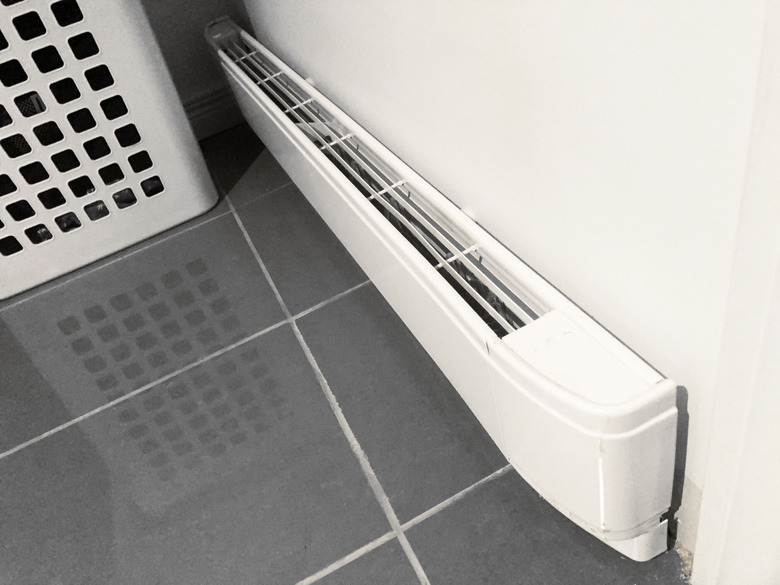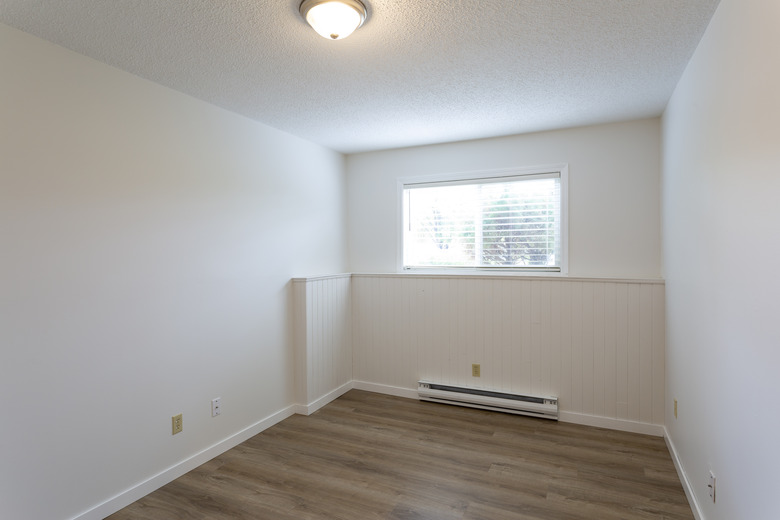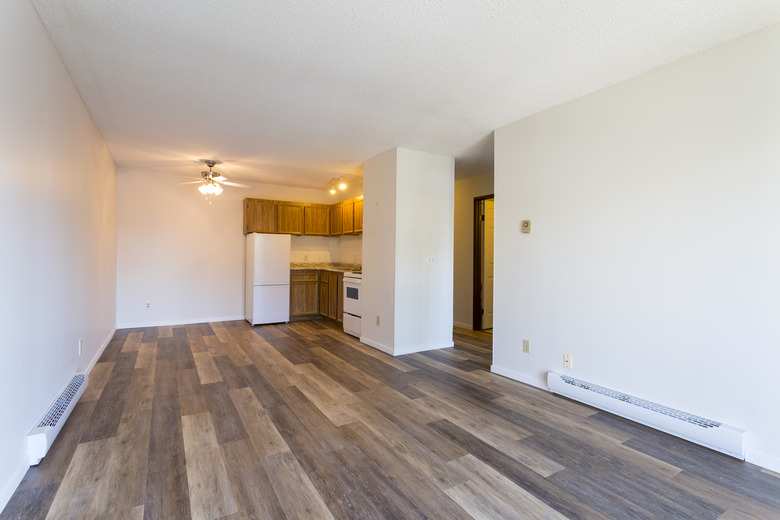5 Common Problems With Electric Baseboard Heaters — And How To Fix Them
We may receive a commission on purchases made from links.
An electric baseboard heater provides some of the most efficient electric heating possible, partly because of its placement near the floor and partly because of its design. Unlike purely radiant heating, electric baseboard heating warms the air and not just the objects in its path, and unlike space or wall heaters, a baseboard unit doesn't need a fan. The movement of cold air through the bottom of the heater and warm air through the top creates a natural convection current that keeps air circulating naturally from the floor to the ceiling.
A hydronic baseboard heater contains tubing filled with hot water heated by a central boiler or water heater and is controlled by a thermostat that also controls other heaters. An electric baseboard heater, however, is a standalone unit that has its own thermostat to control the flow of electricity to its heating element. If your electric baseboard heater is malfunctioning, the thermostat is often the culprit, and when that isn't true, it's usually some other electrical or cleaning problem. Sometimes, though, the heater is miswired or simply underpowered for the room you're trying to heat.
Homeowners can fix some of these six common problems themselves, but some call for professional help.
1. The electric baseboard heater won't turn on.
1. The electric baseboard heater won't turn on.
When your heater won't turn on, the first thing to do is turn up the thermostat. Some units come with built-in thermostats, and if yours is one of these, the thermostat may have malfunctioned in the past, and someone may have installed a wall thermostat to control the unit. If that's the case, turn up the built-in one all the way and then turn up the wall thermostat until the unit switches on. If that doesn't work, look for a tripped circuit breaker in the main electrical panel, and if you find one, reset it.
If you can't get the heater to power up by following these procedures, there is probably a wiring problem in the heater or in one of the thermostats. Homeowners with some DIY electrical skills may be able to find the problem by disassembling the heater or the thermostat, but it's usually a job for an electrician or an HVAC technician. Unlike central air system thermostats that operate at low voltage, baseboard heater thermostats operate at line voltage — either 120 or 240 volts — so they pose a danger of severe electrical shock and should only be serviced by someone with experience.
2. The baseboard heater won't turn off.
2. The baseboard heater won't turn off.
When baseboard electric heaters run continuously, the thermostat is the culprit. Sometimes, you can fix a faulty thermostat by just tapping it to loosen a stuck spring, but the problem can also be dirt on the contacts. An electrician or a qualified DIY homeowner should be able to clean the contacts of a wall thermostat by removing the thermostat cover and blasting the contacts with compressed air from a can after first shutting off the power for safety.
A built-in heater thermostat isn't always accessible even after removing the heater cover, so even if you're DIY savvy, it's usually prudent to call for service if you have one that's malfunctioning. If the problem persists after cleaning, you need a new thermostat.
3. The circuit breaker trips repeatedly.
3. The circuit breaker trips repeatedly.
When the circuit breaker controlling the heater trips when you reset it or soon after, there may be a short circuit in the wiring that needs to be fixed. Before calling an electrician, there are a couple of things you can do yourself:
- Try unplugging the heater and resetting the breaker if you have a plug-in model. If the breaker doesn't trip, the heater is overloading the circuit, and you need to either remove other loads from the circuit or install a new circuit for the heater.
- If the heater is hardwired to a dedicated circuit, check the breaker rating and compare it to the current draw of the heater, which you'll find on a label affixed to the heater. The breaker rating should not be less than the current draw of the heater. If it is, you need to install a circuit breaker with a higher rating.
Although it's rare, the circuit breaker itself may be defective. A homeowner with the necessary electrical skills can replace it, and if that solves the problem, there's no need to spend any more money on electrical troubleshooting.
4. The heater works, but the room stays cool.
4. The heater works, but the room stays cool.
To work properly, an electric baseboard heater needs 3 feet of clearance in front, 6 inches on either side and 12 inches above. Without this clearance, the heater can't generate the airflow necessary to distribute heat. Move any furniture in front of the heater that is too close and move any draperies or curtains hanging too close to the top. Besides the fact that low-hanging draperies can rob the room of heat by capturing warm air behind them, they are hazardous because they can overheat and catch on fire.
Dust buildup inside the heater housing can inhibit airflow, and if it collects on the heating element, it can also ignite. You may be able to remove the cover by tapping off the side caps and lifting the cover straight up, which makes cleaning easy. If you can't get the cover off this way, clean the louvers and the intake area on the underside of the heater as best you can using a vacuum cleaner and a rag.
When cleaning an electric baseboard heater, avoid disturbing the metal heat distribution fins. Bending any of them disturbs the heater's ability to generate a convection current and ultimately its performance. Be sure to first shut off the circuit breaker and wait for the heater to cool down before trying to clean it.
5. The heater produces strange odors.
5. The heater produces strange odors.
The high temperature generated by electrical baseboard heat will incinerate any dust or debris on the heating element, so if you smell something funny, you may just need to clean the heater. If the heater is brand new, the smells are probably due to lubricant used in the manufacturing process, and they will dissipate after a few hours. Smells from a well-used heater should be addressed promptly because they come from combustion, which can start a fire or release carbon monoxide gas into the room.
6. The room is never warm enough.
6. The room is never warm enough.
To properly heat a room, an electric baseboard heating system must supply enough power. Most rooms require 10 watts per square foot, so a 1,000-watt heater can heat a 100-square-foot room but won't provide enough heat for a room with an area of 150 square feet. You may need a more powerful heater.
If the label on the heater indicates that it has a sufficiently large power output to heat the room, it may not be wired properly. Someone may have installed a 208- or 240-volt heater on a 120-volt circuit, which means that one of the hot wires on the heater isn't connected, and the heater is operating at half its capacity. In a case such as this, the solution is to either replace the heater with a 120-volt one with enough power for the room or to install a dedicated 240-volt circuit for the heater.
The second option is more economical despite the fact that you'll probably have to hire an electrician. The higher voltage heater will draw less current and have a smaller impact on your electric bill. Plus, you won't have to buy a new heater.


